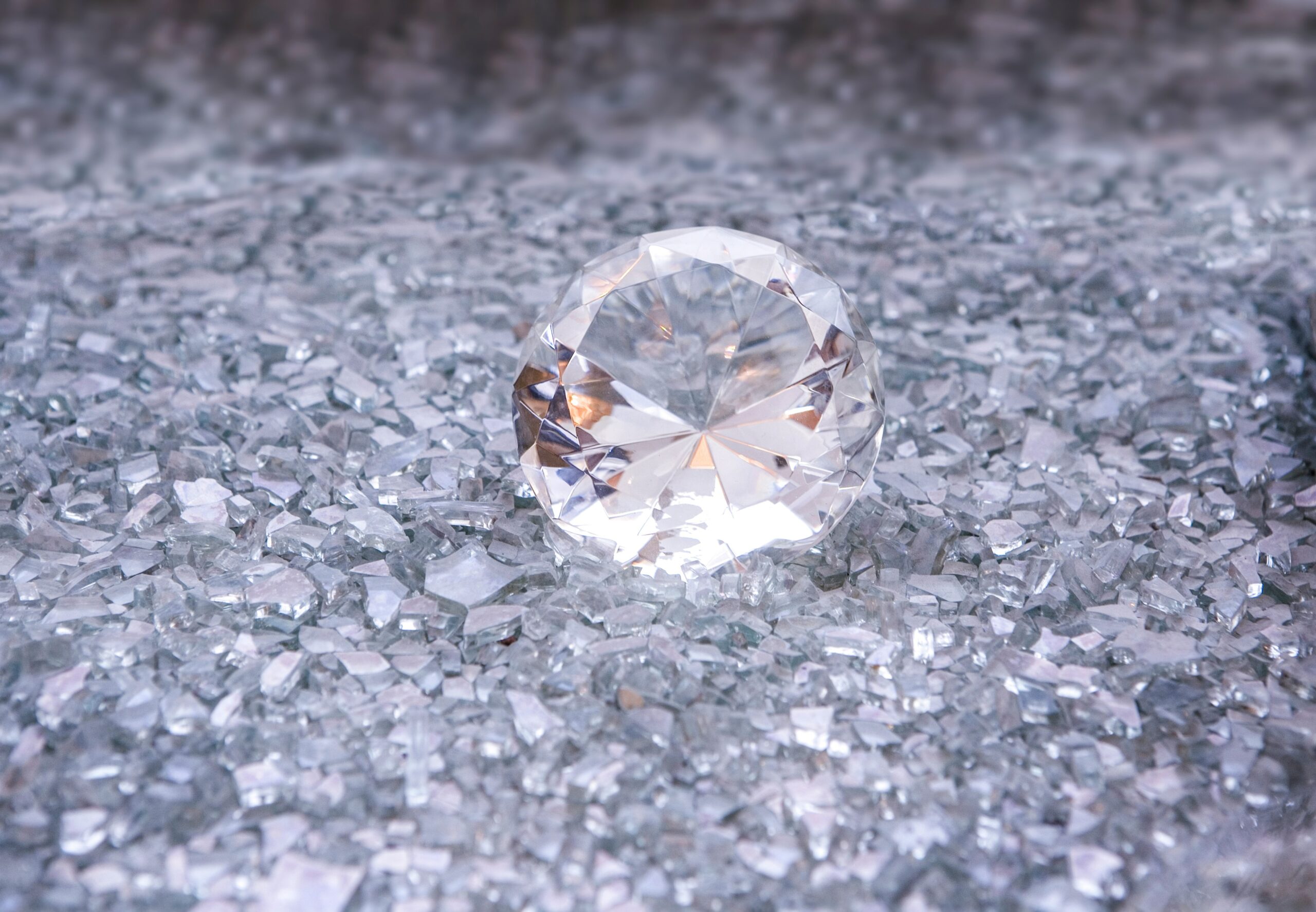
When it comes to selecting the perfect gemstone for your jewelry, the age-old debate between moissanite and diamond often takes center stage. Each gemstone possesses its own unique allure, but how do they truly compare? Let’s dive deep into the fascinating world of moissanite vs diamond to uncover the differences, similarities, and everything in between.
Table of Contents
The Sparkling Newcomer
Moissanite, often hailed as the newcomer in the world of gemstones, is a marvel of modern science. Initially discovered in a meteor crater in Arizona by Nobel Prize-winning chemist Dr. Henri Moissan in 1893, this gemstone is a rare find indeed. Composed of silicon carbide, moissanite dazzles with its exceptional brilliance and fire, making it a popular choice for those seeking an alternative to traditional diamonds.
A Timeless Classic
On the other hand, diamonds have long held a revered status as the epitome of elegance and luxury. Formed deep within the earth’s mantle billions of years ago, diamonds captivate with their unmatched sparkle and durability. With a rich history steeped in romance and tradition, diamonds have become synonymous with eternal love and commitment.
The Battle Begins
Now, let’s delve into the heart of the matter: the key differences between moissanite and diamond. One of the most notable distinctions lies in their hardness and durability. While diamonds reign supreme with a perfect 10 on the Mohs scale of hardness, moissanite follows closely behind at 9.25. This slight variance may seem insignificant, but it can impact the gemstone’s resistance to scratches and abrasions over time.
When it comes to sparkle and brilliance, both moissanite and diamonds shine bright, but in slightly different ways. Moissanite exhibits a fiery brilliance that disperses light with stunning intensity, creating a mesmerizing spectacle. Diamonds, on the other hand, boast a captivating sparkle known as “diamond brilliance,” characterized by the white light that reflects and refracts within the gemstone.
In terms of color and clarity, diamonds offer a wider range of options, from colorless to fancy colored diamonds, each with its own unique charm. Moissanite, however, tends to exhibit minimal coloration, with most stones falling within the near-colorless range. Additionally, moissanite typically boasts exceptional clarity due to its synthetic production process, making it an excellent choice for those seeking a flawless gemstone.
Affordability Factor
One of the most compelling aspects of moissanite is its affordability compared to diamonds. While diamonds command a premium price due to their rarity and natural origin, moissanite offers a budget-friendly alternative without compromising on beauty or quality. This affordability factor has made moissanite increasingly popular among budget-conscious consumers and those looking to maximize their purchasing power without sacrificing style.
Mining and Environmental Impact
Another crucial consideration in the moissanite vs diamond debate is the ethical and environmental impact of gemstone mining. Traditional diamond mining practices have often been criticized for their environmental degradation and human rights abuses, including land disruption, water pollution, and labor exploitation. In contrast, moissanite production involves minimal environmental impact, as it is primarily synthesized in laboratories using sustainable methods.
Emerging Trends
In recent years, we’ve witnessed a shift in consumer preferences towards ethical and sustainable alternatives, driving the rise of moissanite as a mainstream gemstone choice. Celebrities and influencers alike have embraced moissanite jewelry for its eco-friendly credentials and stunning aesthetics, sparking a growing trend towards conscious consumption in the jewelry industry.
Keeping the Spark Alive
When it comes to maintenance and care, both moissanite and diamonds require regular cleaning and occasional professional inspection to maintain their brilliance and sparkle. However, man made diamonds, due to their exceptional hardness, diamonds are slightly more resistant to scratches and abrasions than moissanite. With proper care and handling, both gemstones can retain their beauty and luster for generations to come.
Crafting Unique Pieces
One of the advantages of choosing moissanite over diamonds is the flexibility it offers in customization and design. Moissanite’s lab-created nature allows for greater design freedom, enabling jewelry designers to create unique and innovative pieces that cater to individual tastes and preferences. Whether you prefer a classic solitaire ring or a contemporary halo setting, moissanite offers endless possibilities for creating the perfect piece of jewelry.
The Power of Perception
Perception plays a significant role in the moissanite vs diamond debate, with each gemstone carrying its own symbolism and cultural significance. While diamonds have long been associated with wealth, status, and romance, moissanite offers a more modern and inclusive alternative that celebrates individuality and authenticity. Ultimately, the choice between moissanite and diamond boils down to personal preference and the values you hold dear.
The Final Verdict
In conclusion, the moissanite vs diamond debate presents a fascinating conundrum for jewelry enthusiasts and connoisseurs alike. While diamonds remain the undisputed king of gemstones, moissanite offers a compelling alternative that combines affordability, ethics, and beauty in equal measure. Whether you’re drawn to the timeless allure of diamonds or the modern elegance of moissanite, the most important thing is to choose a gemstone that resonates with your style, values, and sentiment. After all, the true value of a gemstone lies not in its price tag, but in the joy and memories it brings to your life. So, go ahead and embrace the beauty of both moissanite and diamonds, knowing that whichever you choose, you’re making a dazzling statement that’s uniquely yours.
